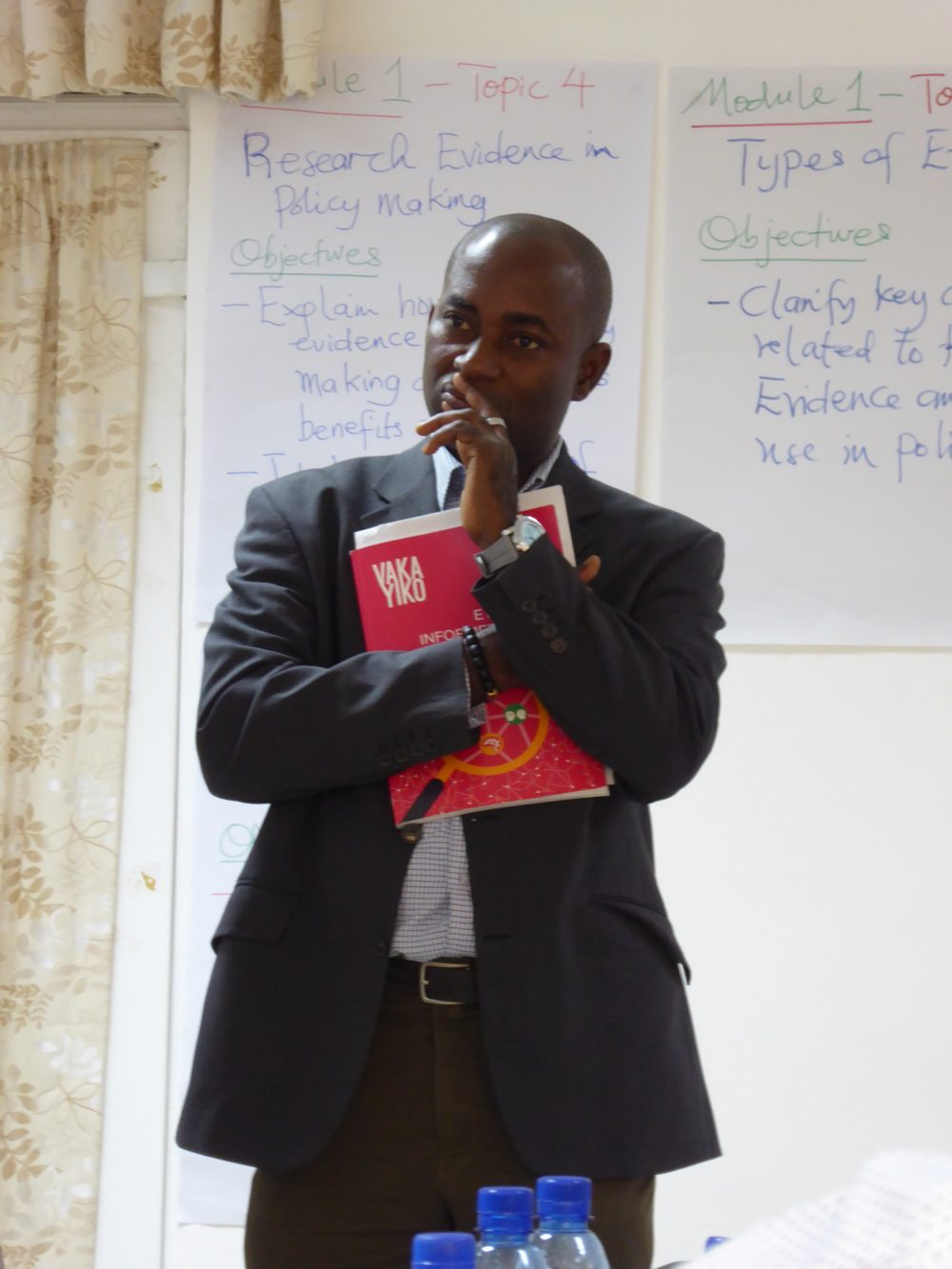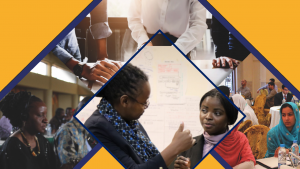
5 ways of adapting the Evidence-Informed Policy Making Toolkit training for your participants – Experiences from GIMPA
Image: Dr. Patrick Tandoh, lead facilitator from GIMPA
Back in January, the Ghana Institute of Management and Public Administration (GIMPA) held a three day pilot of the EIPM Toolkit under their School of Public Service and Governance (SPSG), with support from Ghana Information Network for Knowledge Sharing (GINKS). The Toolkit is an adaptable suite of resources to support capacity building of civil servants and parliamentary staff in gathering, appraising and communicating evidence to inform policy making. So far, it’s been used in Ghana, Zimbabwe, Uganda and Sudan.
Having observed the training, Faaria Hussain (INASP’s Programme Officer for the Evidence-Informed Policy Making team) lists five ways GIMPA adapted the Toolkit to ensure learning was maximized for their participants. Feedback from both participants and facilitators: Dr. Kingsley Agomor and Dr. Patrick Tandoh, show that the training was successful, covering relevant content and as a result, GIMPA are considering rolling out the Toolkit further.
1. Tailor the material
It is important to know who the participants will be in order to ensure the content of the training is relevant. GIMPA did this by asking the following questions in the application form:
- What institution do you work at and what is your current role there?
- What is your highest qualification?
- What are your expectations for the training?
This informed selection of Modules and Topics from the Toolkit that were most relevant and would meet participant’s expectations. In this instance, to meet the needs of senior-level participants, Module 1, An Introduction to EIPM and Topic 1, An Introduction to Search Strategies from Module 2 were chosen.
A new case study was also produced based on the participant’s backgrounds – a case study that uses a scenario from Zimbabwe was replaced with a new scenario specific to Ghana: “towards legislation on affirmative action in Ghana” (produced by GINKS).
2. Respond to participant feedback
At the end of each day participants were asked to anonymously complete exit cards noting what went well, what didn’t go well and what they needed further clarification on. The facilitators along with GIMPA’s Course Advisor and GINKS reviewed these cards daily in order to respond to feedback the following morning.
One example picked up from the first day of training was feedback from a number of participants asking for further clarification about the difference between Evidence-Informed Policy Making and Evidence-Based Policy Making. That evening one of the facilitators created extra slides defining the two terms explicitly and began day two spending time to go through this to ensure participants understood this and were happy to move on. The extra time taken to do this was well received by participants and the two terms were noted as one of the biggest learnings by participants.
3. Keep your schedule flexible to enable learning to take place
Of course it is important to stick to general timing to ensure all content is covered, but there will undoubtedly be some sessions that participants engage with more than others. When this happens it’s good to allow time for discussions to take place as it’s a key time when participants are learning from one another and clarifying points. In the case of the GIMPA training, under the feedback of “facilitation”, participants rated facilitators fostering a constructive and participative atmosphere and providing constructive feedback most highly.
4. Bring in the experts
The Toolkit values the contribution of outside expertise can bring to the training, , particularly from the research community. In this training Prof. A.A. Alemna was bought in to lead the session on search strategies using his knowledge as a former Librarian at the University of Ghana. Not only was he knowledgeable about the topic at hand, but also had previous experience of conducting this session through other EIPM Toolkit trainings in Ghana so knew the content well and had material prepared.
5. Use what you need
The Toolkit should be treated as a suite of resources that can either be run as full training course or deconstructed as Modules/Topics/Activities used to complement other courses. The pilot at GIMPA gave the School a real taste of what the Toolkit is and they have plans to incorporate material into three of their existing training programmes:
- Postgraduate Diploma in Public Administration
- Senior Management Training Programme
- Policy Formulation And Analysis Programme
The EIPM Toolkit is not designed to be prescriptive, in fact quite the opposite allowing for flexibility as required to maximize learning and suit the institution where the training is being conducted. If you would like more information regarding the EIPM Toolkit and how INASP can support you please contact Faaria Hussain for more information: fhussain@inasp.info.

 Previous Post
Previous Post


